China’s PLA has been strengthening its logistics in Tibet after Doklam and the feverish pace of projects indicates military implications for India.
New Delhi: A year after its stand-off in Doklam with India, China has redoubled its effort to strengthen its road and rail infrastructure across the difficult terrain of Tibet, and is now focussing on connecting the strategic cities of Lhasa and Tsetang.
China’s logistics and supply chain was put to the test during the 72-day-long face-off at Doklam, pushing the People’s Liberation Army to focus on three road and rail axes from Lhasa — to Kashgar, Xining and Chengdu.
Also read: China learns lessons from Doklam, changes logistics & supply systems in Tibet
The projects are being executed at a feverish pace, and the redundancy being created in infrastructure indicates military implications for New Delhi.
The road to Tsetang
The eastern axis from Lhasa to Chengdu passes through Nyingchi, one of the main cantonment towns opposite the Tuting sector in Arunachal Pradesh. The Lhasa-Nyingchi stretch has double road connectivity — a northern highway completed earlier this year, and another southern road that runs alongside the Yarlung Tsangpo (Brahmaputra) river.
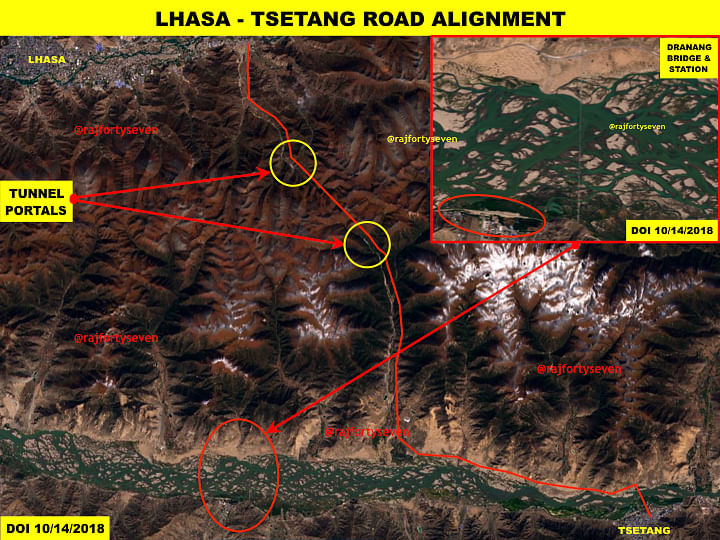
Tsetang is a major military town in southern Tibet — any activity towards Tsona (Cona) town opposite the Tawang sector in India has to pass through this important Chinese cantonment. But so far the only way across the mountains from Lhasa to Shannan is a circuitous chunk of the southern road mentioned above.
Sometime at the end of 2017, China decided to construct a direct road from Lhasa to Tsetang.
Satellite imagery accessed by ThePrint indicates a 75 km-long four-lane road is being built from Dagze in Lhasa to Tsetang via Samye town, and then along the Yarlung Tsangpo’s northern shore.
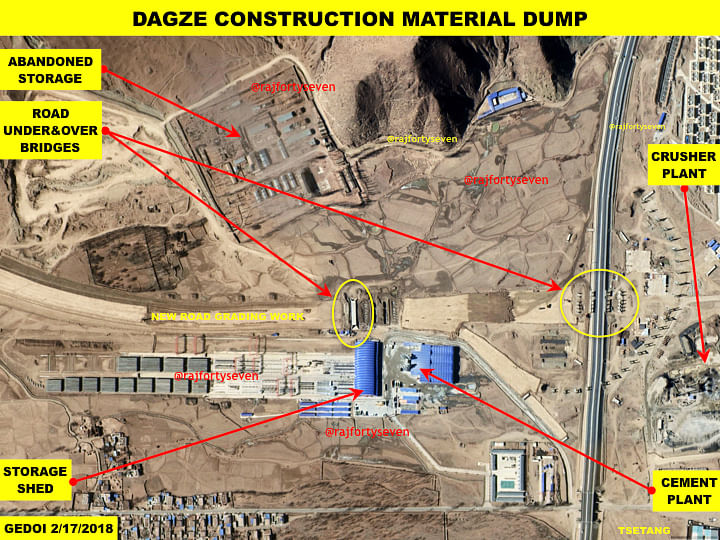
The road will cut the distance between the two cities to less than half, and travelling time to just one hour from three.
The road cuts across the mountain range with huge twin tunnels almost 12 km long. The width of each tunnel is 12.5m, indicating an inner diameter of 10m.
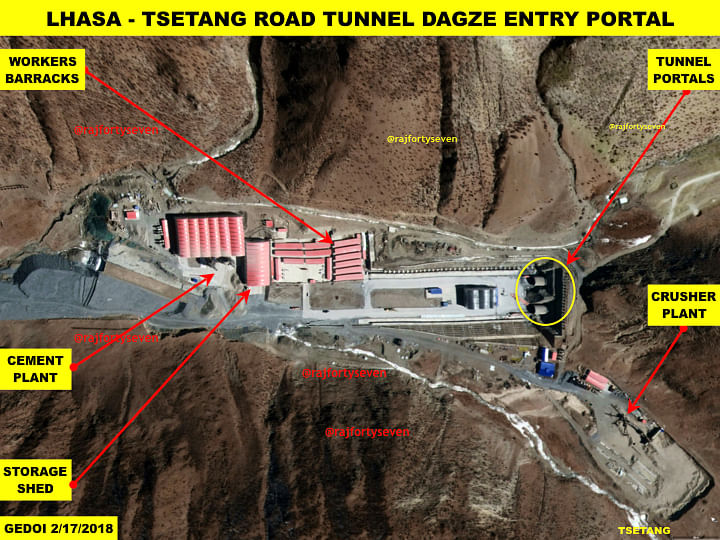
Railway to Tsetang & beyond
A Lhasa-Tsetang railway line is also under construction, extending up to Nyingchi. The infrastructure is almost complete, and the railway line is being laid.
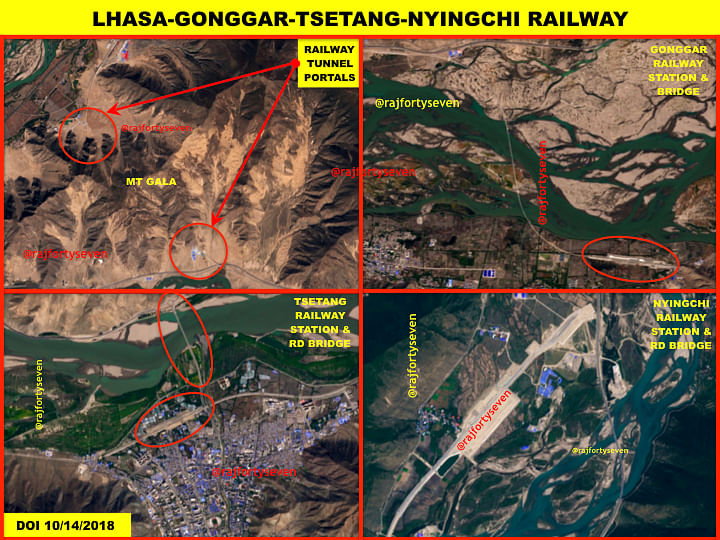
A new tunnel, about 4.5 km long, is being constructed through Mount Gala. A railway bridge about 5 km long has also been constructed over the Yarlung Tsangpo.
New railway stations are being constructed all along the route at Gonggar, Dranang, Tsetang and Nyingchi. The Nyingchi station is also likely to have sidings for loading and unloading.
Also read: China is racing to complete 2 nuclear plants to ease Karachi’s power shortage
New road bridge
A new bridge has been constructed east of Dranang railway station, connecting the roads passing north and south of the river
The bridge is 5 km long and possibly constructed as an alternate to Gonggar bridge, considering a possible hostile situation.



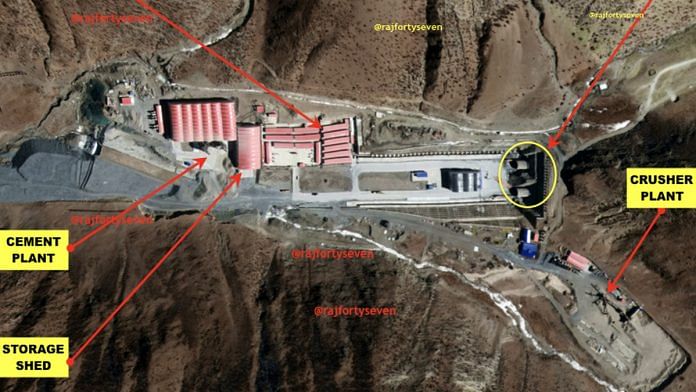



I like the article on the new road. My eyesight is not good enough to see details in the fotos. Too bad.
Raj, I got to see your articles on Print. Still, please dont forget to send me links, else I cant add your articles to twitter feed/
You’v e seen PTI saying Chinese sources say minimum of five carriers? I dont agree. Its six, in the 1st Phase.Five is acceptable if they exclude L16 as a training carrier. People gotta keep up with the carrier aircraft situation: they know J15 is useless. which is why they’re working to replace it. No sense in going on and on on J15 as a failure. Your thoughts?
Mountains are on Indian side where road building is ten times harder. On Chinese side, it is a 5,000 ft plateau where road building is easier.
Guns positioned on the mountains can destroy all these roads with ease. Moreover these roads have no economic advantage or disadvantage. Chinese have free labour gangs organized and are furiously building BRI or CPEC with no economic advantage. On BRI and CPEC, a ship carrying 30,000 tons of goods from eastern manufacturing heartland of China can carry goods to Indian Ocean much more easily than 5,000 trucks carrying same amount of goods over a 14,000 feet Khunjreb Pass to Gawadar in Pakistan. The costs calculated of shipment would be 7 times higher by road, hence all this border or international road building is more of a propaganda than an economic reality.